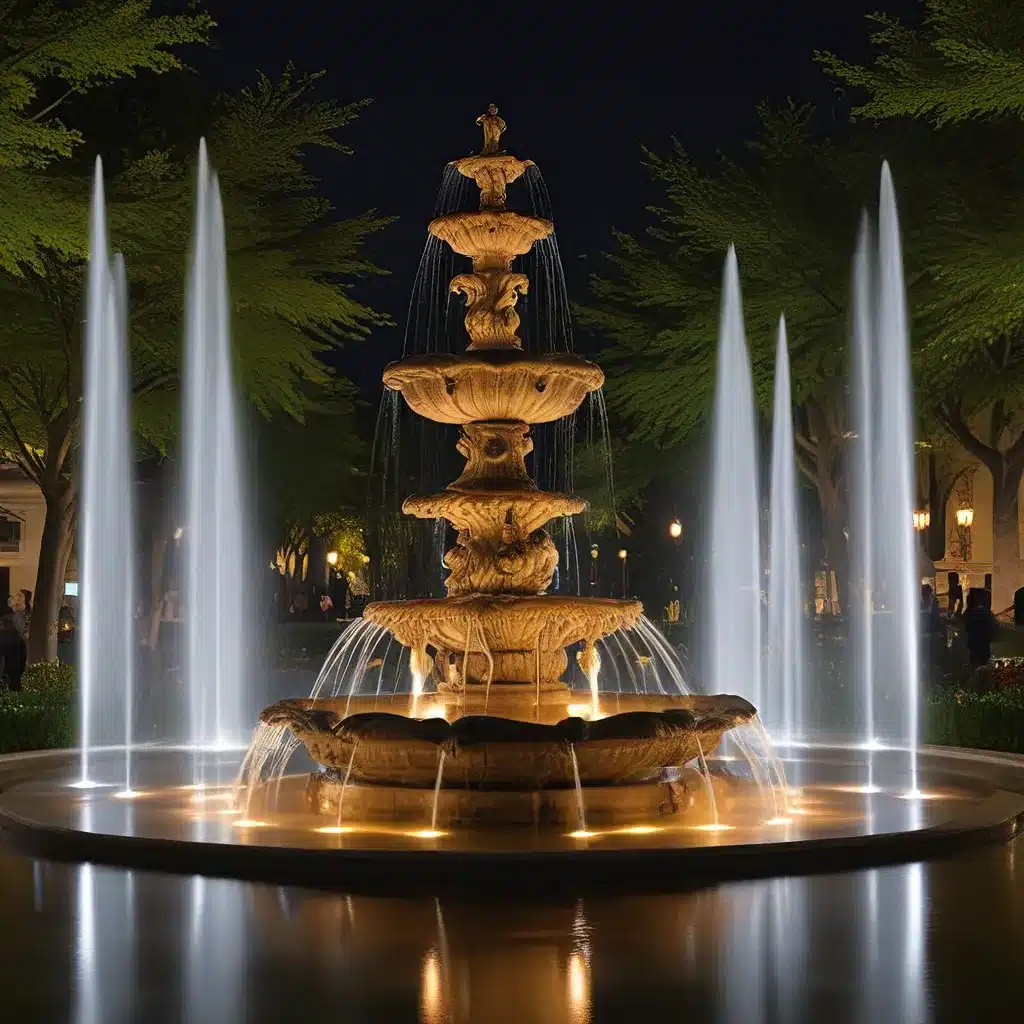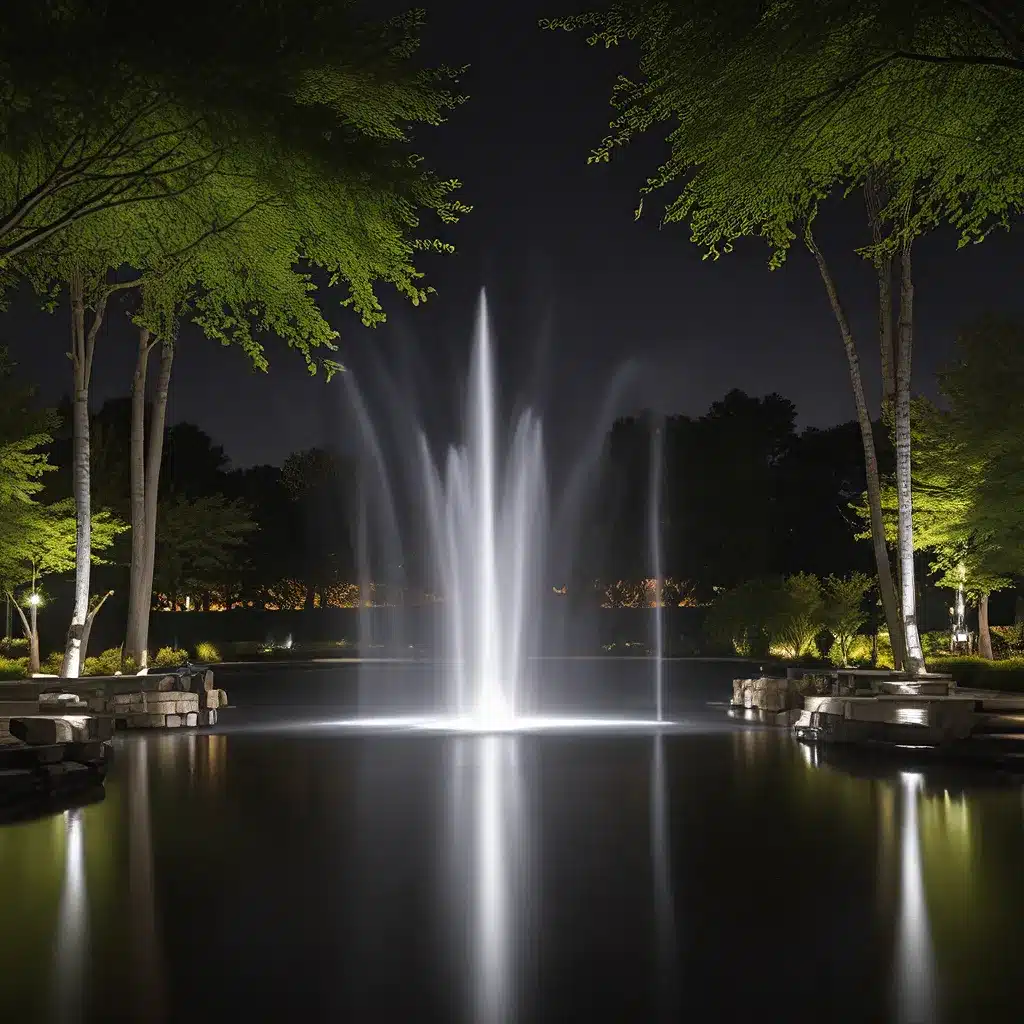
Fountain Design Essentials – Welcome to Fountain Lights
Fountain Design Essentials – Welcome to Fountain Lights

As I step into the warm, steamy sanctuary of Dillon’s Russian Steam Bath, I’m immediately struck by the timeless, almost otherworldly atmosphere. The cavernous space, bathed in a soft amber glow, is a far cry from the neon-lit chaos of Route 1 just outside. Yet, in a way, this hidden oasis embodies the very essence of what makes this concrete jungle so captivating – a pocket of unexpected wonder, a refuge from the everyday.
In many ways, the journey that has led me here is a metaphor for the power of biophilic design to transform our built environments. Just as Dillon’s offers a restorative respite from the urban din, the strategic use of water features and innovative lighting can infuse even the most mundane spaces with a sense of serenity and wonder.
The concept of biophilia, or our innate human affinity for the natural world, has long fascinated researchers and designers alike. As our modern lives become increasingly divorced from the rhythms of nature, the need to reconnect with the great outdoors has never been more pressing. And when it comes to enhancing health, well-being, and cognitive function, few design elements can rival the transformative power of water and light.
Extensive research has shown that immersion in natural environments can reduce stress, improve cognitive function and creativity, and even expedite healing. And as the world’s population continues to urbanize, these qualities are ever more important. Biophilic design offers a powerful antidote, providing people with opportunities to live and work in healthy, nature-inspired spaces.
At the heart of biophilic design are the “14 Patterns of Biophilic Design” – a framework that articulates the relationships between nature, human biology, and the built environment. These patterns, which range from visual connections to natural analogues and spatial configurations, offer a roadmap for enhancing the human experience through thoughtful, nature-inspired design.
Within this rich tapestry of biophilic design, two elements stand out as particularly transformative: water and light. From the soothing sounds of a babbling brook to the mesmerizing play of sunlight on a rippling surface, these natural phenomena have long captivated the human imagination.
The Presence of Water pattern, for instance, has been shown to elicit a host of physiological and psychological benefits. Studies have demonstrated that exposure to water features can lower blood pressure and heart rate, increase feelings of tranquility, and even enhance cognitive function and memory restoration. The multi-sensory experience of seeing, hearing, and potentially touching water creates a powerful connection to the natural world.
Similarly, the strategic use of Dynamic & Diffuse Light can have a profound impact on human well-being. Lighting that mimics the rhythms and qualities of natural illumination has been linked to improved mood, reduced cognitive fatigue, and even better sleep quality. By harnessing the power of light to create an engaging, ever-changing environment, designers can tap into our deep-seated biological responses to the natural world.
Of course, the true magic happens when water and light are seamlessly integrated into the fabric of the built environment. Fountain lighting offers a prime example of this synergistic approach, where form and function coalesce to create spaces that are not only aesthetically captivating, but also profoundly restorative.
Imagine a tranquil courtyard, where the gentle rippling of water and the interplay of light and shadow create a symphony of sensory delights. The soothing sounds and mesmerizing visuals can help to alleviate stress, boost cognitive performance, and even enhance feelings of well-being and connection. By strategically placing and illuminating water features, designers can harness the power of biophilic design to transform even the most utilitarian spaces into vibrant, life-affirming oases.
Of course, achieving the perfect balance of water and light is no easy feat. It requires a deep understanding of the science behind biophilic design, as well as a keen eye for aesthetics and an unwavering commitment to craftsmanship.
At the heart of successful fountain lighting lies a mastery of lighting techniques and water feature design. From the strategic placement of luminaires to the choreography of water movement, every element must be carefully considered to create a cohesive, immersive experience.
Fountain lighting experts have honed their craft over decades, drawing on the latest research and innovations to transform even the most mundane water features into true luminous landmarks. By blending the latest LED technologies with advanced control systems, they can create dynamic, responsive lighting that adapts to the changing needs and moods of the space.
But it’s not just about the technical wizardry. The true magic of fountain lighting lies in its ability to captivate the senses and foster a deep, almost primal connection to the natural world. Whether it’s the mesmerizing play of light on water or the soothing sounds of a cascading fountain, these elements have the power to transport us, to inspire awe and wonder, and to remind us of our place within the grand tapestry of life.
As we grapple with the challenges of an increasingly urbanized world, the importance of biophilic design has never been more apparent. By strategically incorporating elements like water and light, we can create spaces that nourish the mind, body, and spirit, offering a much-needed respite from the stresses of modern life.
But this is just the beginning. As our understanding of the human-nature connection continues to evolve, and as technology enables ever more sophisticated and responsive design solutions, the possibilities for transformative biophilic experiences are endless. From interactive water features that respond to human movement to intelligent lighting systems that adapt to our circadian rhythms, the future of fountain lighting is poised to be nothing short of breathtaking.
So, as I step out of Dillon’s steam-filled sanctuary and back into the neon-lit chaos of Route 1, I can’t help but feel a renewed sense of wonder and appreciation for the power of biophilic design. For in these small pockets of nature-inspired beauty, we catch a glimpse of a more harmonious, restorative future – one where the boundaries between the natural and the built world blur, and where the simple act of connecting with the elements can unlock profound and lasting benefits.
Share to :
Subscribe to our newsletter for the latest in fountain design, innovative lighting ideas, and exclusive tips straight to your inbox. Join the community shaping the future of water features.

Rapid delivery to your doorstep.

Excellence in every product.

Great value for your investment.

Assistance at any hour.
Fountain Lights — Illuminating creativity in every splash!
Copyright © 2023. All Right Reserved